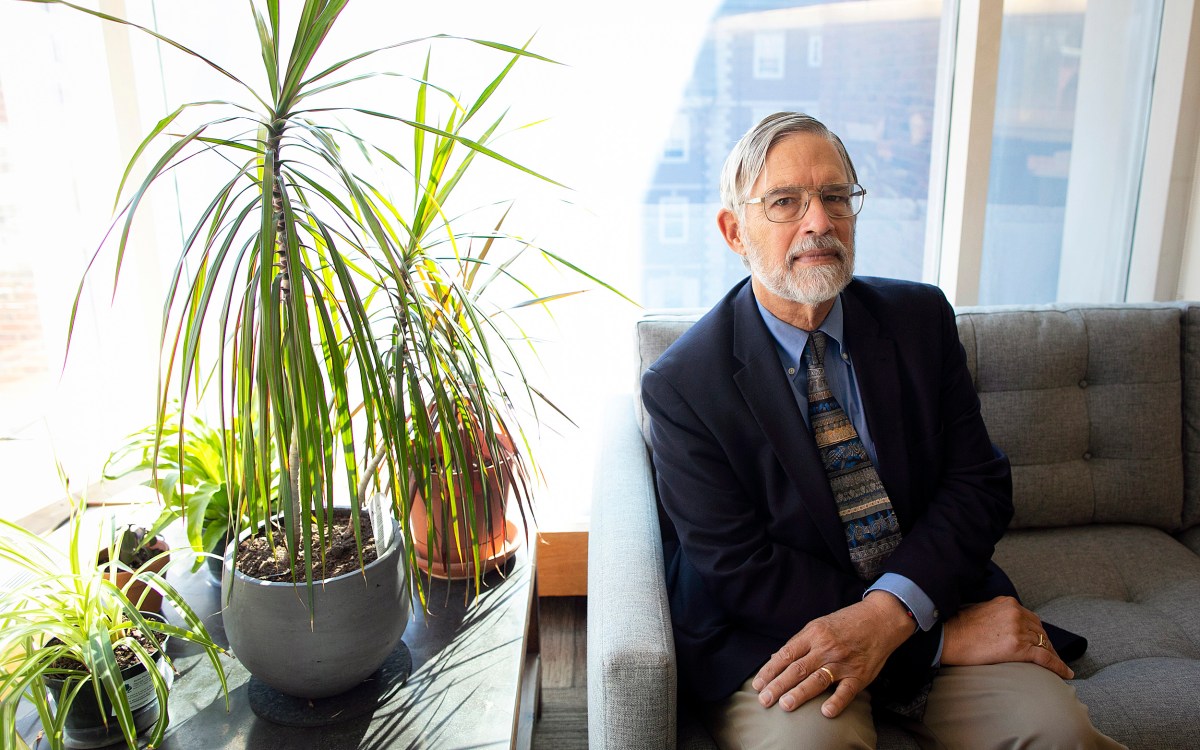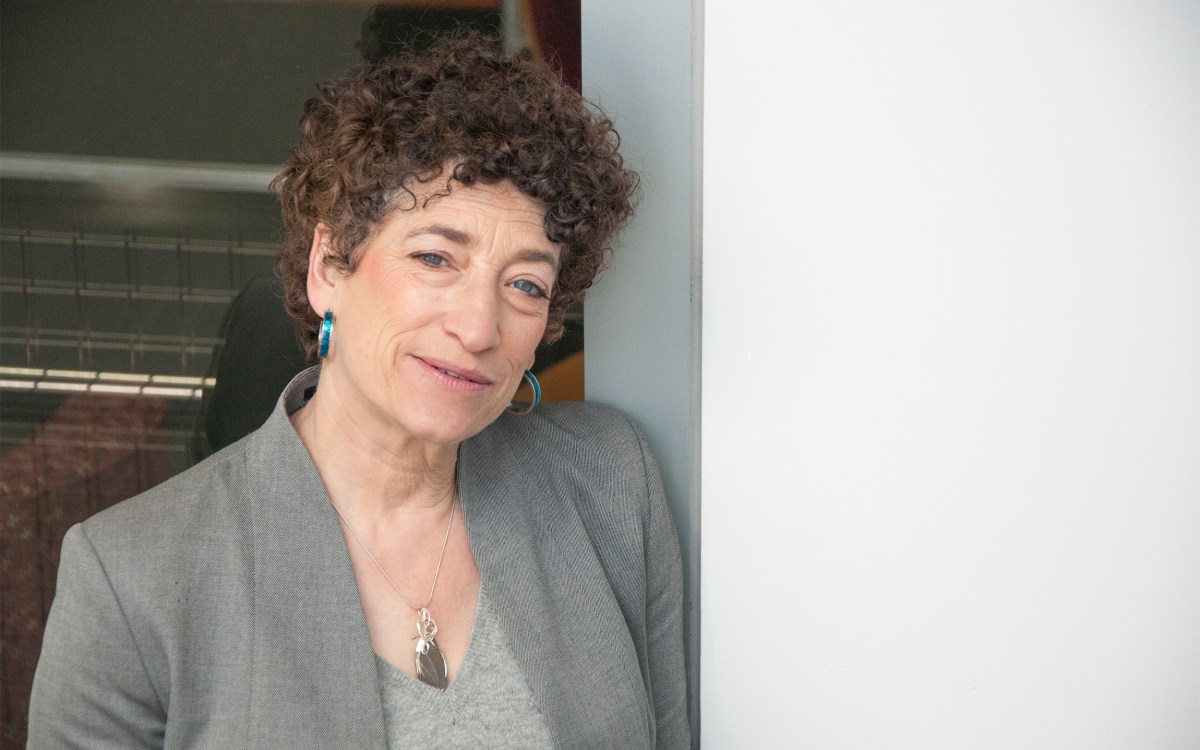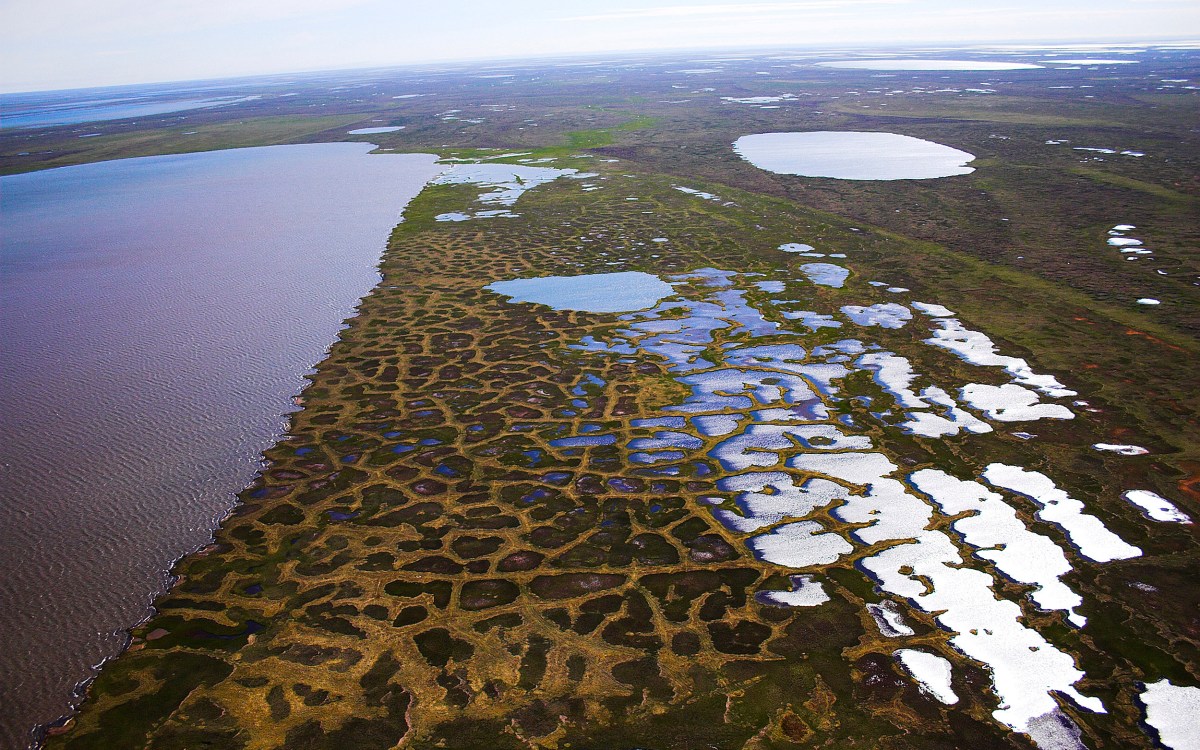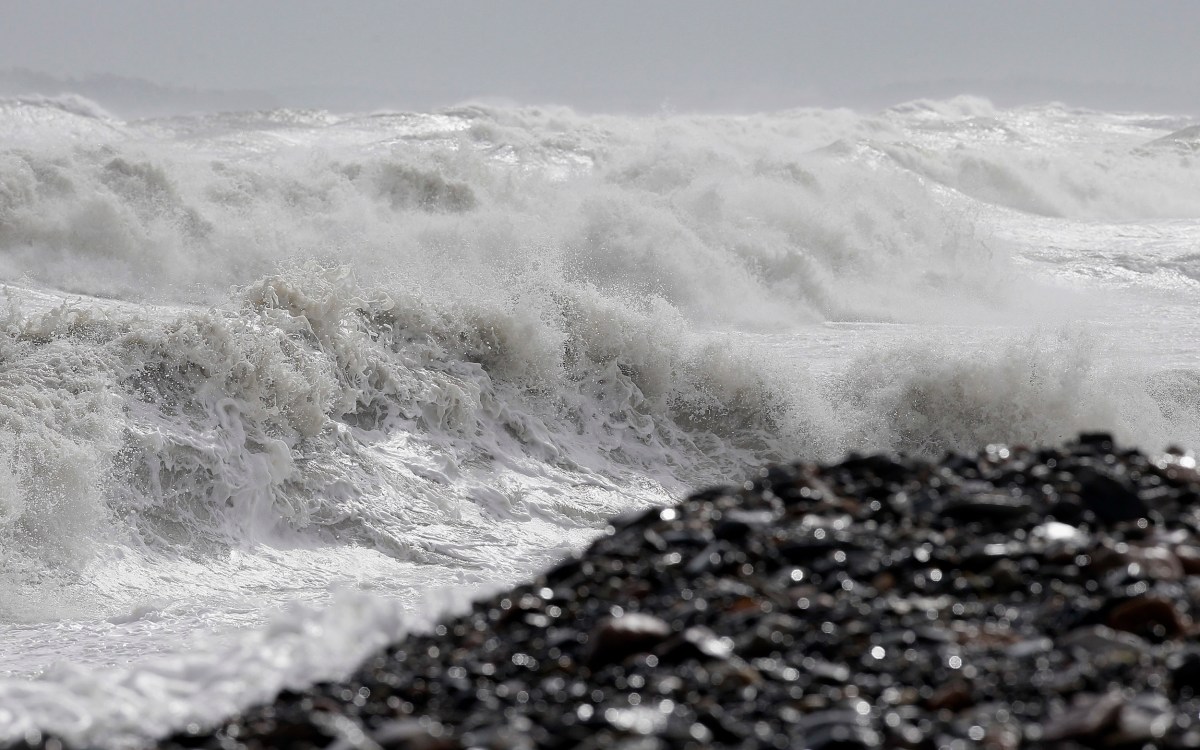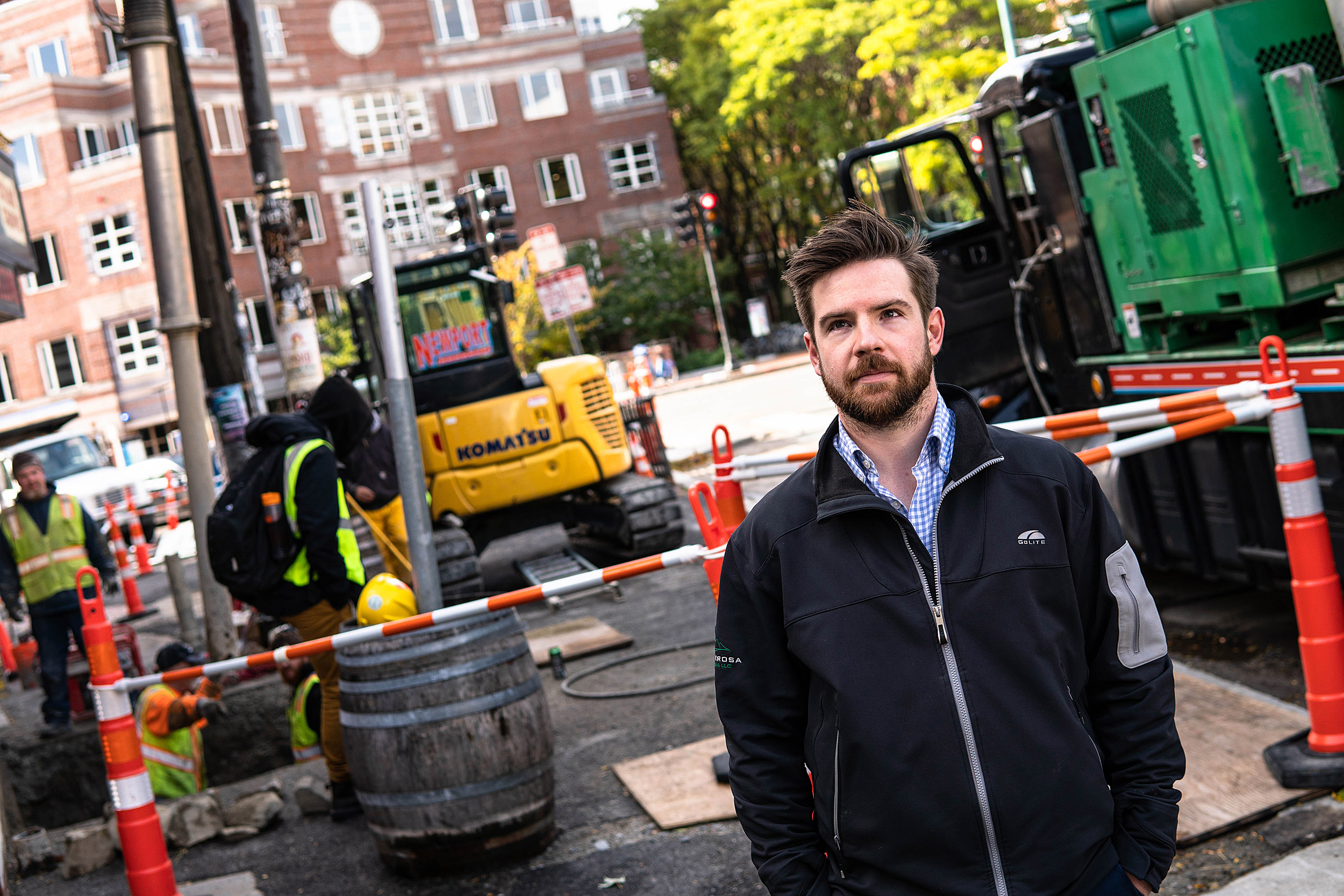
Patrick Behrer crunches the numbers and offers a look at life two degrees warmer.
Photo by Sophie Park
Toll of climate change on workers
Harvard economist says rise in number of very hot days will cut productivity and hike health risks, especially for many in blue-collar jobs
Simply put, said Patrick Behrer, the world is getting hotter “and that heat imposes large costs on people.” In particular, those who work outdoors or in factories lacking air conditioning or ventilation are most at risk for the ill effects of on-the-job heat exposure such as sun stroke, impaired cognitive function, and possibly even death.
Behrer ’09, an environmental and developmental economist and Harvard Ph.D. candidate in the Graduate School of Arts and Sciences, emphasizes the looming scale of the crisis with a little math. Given the nature of climate change, he said, the shifts in the number of very hot days will be greater than those in the mean temperature.
For example, a uniform, global temperature increase of 2 degrees Fahrenheit would shift Boston’s mean temperature from roughly 52 to 54 degrees Fahrenheit. On its face, not a catastrophic jump.
“But what that does mean in a place like Boston where we currently have periodic hot days, is that you are moving the tails of the distribution and dramatically increasing the number of extremely hot days,” said Behrer. “From the mid ’80s to the early 2000s Boston averaged somewhere between five and eight days above 90 degrees. Taking some of the median projections up to 2050, Boston’s projected to see somewhere between 30 and 50 days above 90 degrees a year, even though the mean temperature change is only going to be a few degrees.”
And those extra-warm days would take a dramatic toll on the nation’s workforce. In the past, the climate-change narrative has tended to highlight negative environmental outcomes: the loss of crops, more frequent and more violent storms, increased flooding, and sea level rise. But experts have long been aware of the negative health effects of exposure to heat. Studies have shown a substantial increase in deaths as the temperature exceeds 90 degrees, said Behrer, who hopes his work can help shine a light on how rising temperatures are affecting workers in vulnerable jobs.
Source: NOAA (2019); World Climate Research Programme via Patrick Behrer and Jisung Park (2050 projections)
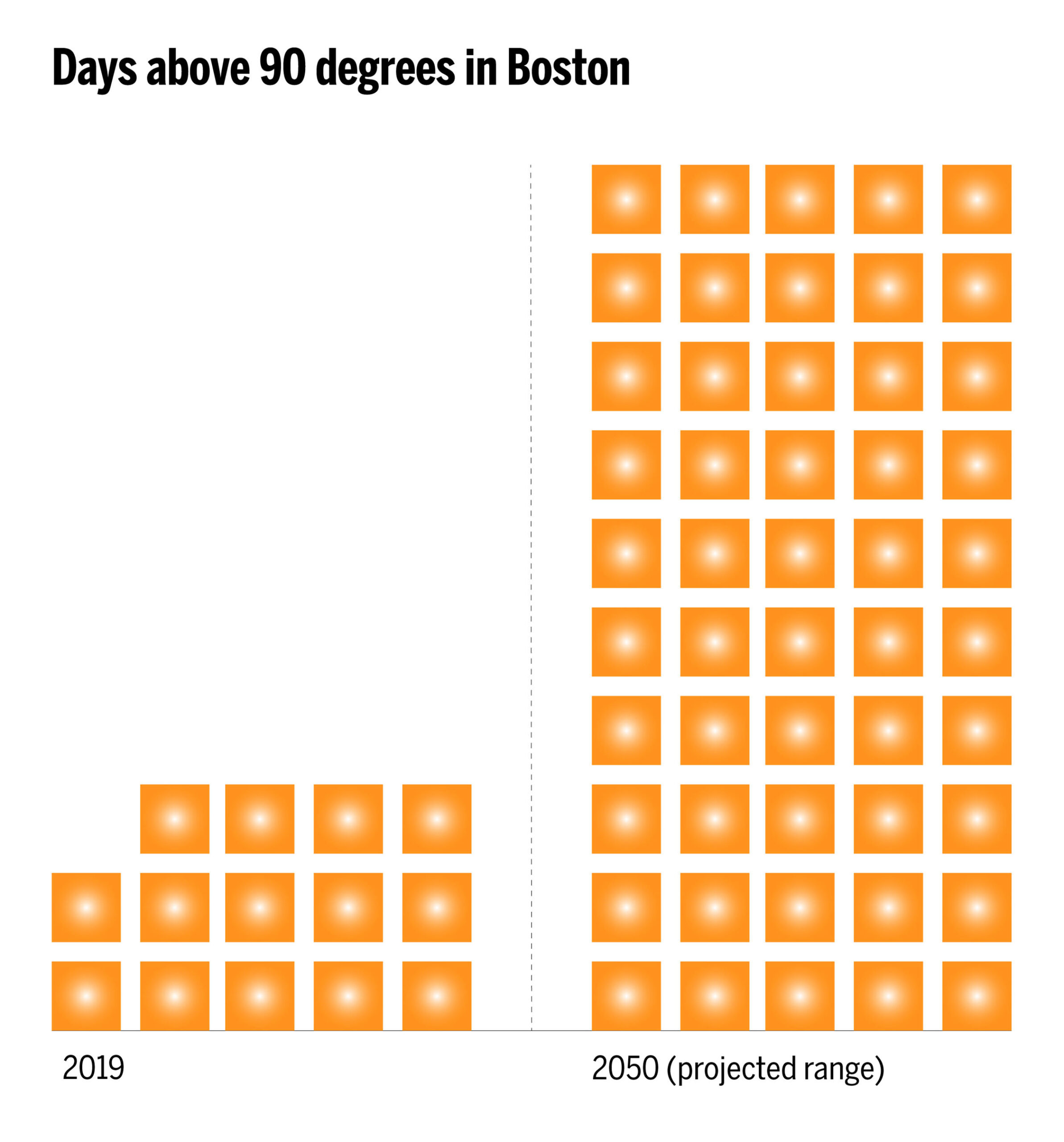
In response to rising worries over climate change, Harvard pledged in 2008 to reduce its greenhouse gas emissions 30 percent by 2016, a goal it achieved. The University is now working to become fossil-fuel-neutral by 2026 and free by 2050. It is also funding numerous research efforts in the field.
With the support of a grant from Harvard’s Climate Change Solutions Fund, Behrer and colleague Jisung Park, an assistant professor at the University of California, Los Angeles, who earned his Ph.D. at Harvard, are tracking the health effects of working in a hot environment and the ripple effects on the economy, including reduced productivity and pay.
The study builds on Park’s earlier Harvard research that examined heat stress on student performance. Using new data from both the U.S. government and California, Behrer and Park will examine the impacts of heat on workplace safety across the entire country, as well as on a more granular, “finely resolved” state level.
“Relative to the other damages of climate change, the impact of any given hot day is small, both in absolute and relative terms; some of our other work suggests that just one additional hot day removes a fraction of a percent of your annual take-home pay,” said Behrer, referring to lost time on the job that is heat-related. “When you start talking about going from eight extremely hot days to 50 extremely hot days, then that that adds up very quickly. It also adds up very quickly when you’re taking a fraction of a percent of pay away from large parts of the United States.”
Behrer thinks his research could help experts as they continue to revise the process used to calculate the social cost of carbon — the measure in dollars of the long-term damage done by a ton of carbon dioxide emissions in a given year. Currently the figure is roughly $50 per ton. Adding heat, especially its mortality impacts, into that calculation “could increase that number by 25 to 50 percent, or possibly more,” said Behrer.
He also hopes his work will inform policy and contribute to the conversation around a national standard for workplace heat exposure. The National Institute for Occupational Safety and Health has published criteria for a recommended standard for on-the-job heat stress, which includes recommendations for employers about how to prevent heat-related illnesses. Three states, California, Washington and Minnesota, have adopted their own standards for workplace heat exposure, but a federal requirement doesn’t yet exist.
Behrer said such a national code could be costly to firms that already comply with workplace heat recommendations, and that regional humidity levels could mean a state-by-state regulatory approach is more efficient. “We’re still uncertain a national standard is the best approach,” said Behrer. “That’s one of the questions we are aiming to answer with our research.”
Shining a light on the nation’s rising inequality is another important dimension to Behrer’s work. Lower-wage workers such as landscape, construction, and agricultural laborers are set to suffer disproportionately as the planet warms, he said, and it’s not only those required to spend eight hours a day outside who are at greater risk.
“Manufacturing is also one of the other big industries in which large parts of the working population are exposed to heat, because a lot of a lot of large-scale manufacturing installations are just simply too large to be air conditioned,” said Behrer. “So you’re inside in a very real sense, but the building is not climate-controlled in any way. It can actually be hotter inside the building than outside of the building. And so there’s a question about whether the standards should be targeted specifically at those working outside or just written more broadly.”
Behrer, who loves the outdoors, said he always knew his professional life would be in “the environmental space.” He had intended to apply to law school after college, but early in his first year he found himself returning to a conversation he’d had with his father, a general contractor in Pennsylvania who had watched roofers adjust their start times to 3 a.m. to avoid the brutal afternoon sun. “We talked about how it seemed like the front in the environmental movement was shifting from the legal space to the economic space.”
So he concentrated in economics, a field where he felt he could make the biggest impact. He sees his current research as vital in the effort to help mitigate the harmful effects of climate change.
“I wouldn’t be working on this,” Behrer said, “if I didn’t think it was a huge, huge problem.”



